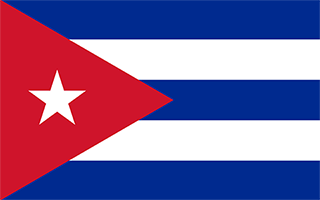Facts and Data
Webpages:
Official Unesco Page
Basis Data:
Unesco World heritage since: 2005
Size of heritage: 70 ha
- Buffer zone: 105 ha
Coordinates:
Longitude: -79,547°
Latitude: 22,147°
Summary
The colonial town of Cienfuegos was founded in 1819 in the Spanish territory but was initially settled by immigrants of French origin. It became a trading place for sugar cane, tobacco and coffee. Situated on the Caribbean coast of southern-central Cuba at the heart of the country’s sugar cane, mango, tobacco and coffee production area, the town first developed in the neoclassical style. It later became more eclectic but retained a harmonious overall townscape. Among buildings of particular interest are the Government Palace (City Hall), San Lorenzo School, the Bishopric, the Ferrer Palace, the former lyceum, and some residential houses. Cienfuegos is the first, and an outstanding example of an architectural ensemble representing the new ideas of modernity, hygiene and order in urban planning as developed in Latin America from the 19th century.
Location on Map
Show bigger map on Openstreetmap
Urban Historic Centre of Cienfuegos
The Urban Historic Centre of Cienfuegos, located in the municipality of Cienfuegos, Cuba, is a UNESCO World Heritage site that showcases the unique blend of architectural styles and urban planning from the 19th and 20th centuries. This historic center is a testament to the city's rich history and cultural heritage.
History
Cienfuegos was founded in 1819 by French settlers, led by Louis de Clouet, who were attracted to the area due to its strategic location and natural harbor. The city quickly became an important trading port, connecting Cuba with the rest of the Caribbean and the world. The French influence is evident in the city's architecture, which combines neoclassical, eclectic, and art nouveau styles.
During the 19th century, Cienfuegos experienced a period of economic prosperity, fueled by the sugar industry and the arrival of wealthy merchants. This wealth allowed for the construction of grand mansions, public buildings, and parks, which still stand today as a testament to the city's past glory.
In 2005, the Urban Historic Centre of Cienfuegos was inscribed as a UNESCO World Heritage site, recognizing its outstanding universal value and the preservation of its architectural and urban ensemble. The site encompasses an area of approximately 70 hectares and includes the city's main square, Parque José Martí, as well as numerous historic buildings and monuments.
Current State
The Urban Historic Centre of Cienfuegos has been well-preserved, and many of its buildings have been restored to their former glory. The city's main square, Parque José Martí, is a focal point of the historic center and is surrounded by important landmarks such as the Tomás Terry Theater, the Cathedral of Cienfuegos, and the Palacio de Gobierno.
The Tomás Terry Theater, built in 1889, is a stunning example of neoclassical architecture and continues to host cultural events and performances. The Cathedral of Cienfuegos, completed in 1869, is an impressive structure with its twin towers and intricate stained glass windows.
The Palacio de Gobierno, also known as the Palacio Ferrer, is a striking building that now houses the Provincial Museum. Visitors can explore the museum's exhibits, which showcase the history and culture of Cienfuegos and its surrounding region.
Walking through the streets of the Urban Historic Centre, visitors can admire the beautiful facades of the colonial-era buildings, many of which have been converted into boutique hotels, restaurants, and shops. The city's vibrant atmosphere, with its lively music scene and welcoming locals, adds to the charm of this UNESCO World Heritage site.
Efforts are ongoing to ensure the preservation and maintenance of the Urban Historic Centre of Cienfuegos. The local government, in collaboration with UNESCO, has implemented various initiatives to safeguard the site's architectural heritage and promote sustainable tourism.
Overall, the Urban Historic Centre of Cienfuegos stands as a testament to the city's rich history and architectural legacy. Its well-preserved buildings and vibrant atmosphere make it a must-visit destination for those interested in Cuba's cultural heritage.
